In some cases, or in some areas, building an inground pool is just not possible. However, even the smallest pools can cause issues if conditions aren’t right. Poor soil quality, a high water table, terrain issues, building and zoning restrictions – any of these can prevent building a swimming pool in the ground. In other cases, a homeowner may not want to spend $20,000 or more on a backyard oasis, and above ground pools are generally a more affordable option. But what about when it comes to an above ground pool deck?
Above ground pools may be slightly less attractive than an inground pool, but they don’t have to be! With some creative planning, grading, and decking, above ground pools with decks can be truly stunning and inviting, and cost half as much to build as one of our inground pool kits.
Here’s a look at some above ground pool designs that are out of the ordinary, and definitely uniquely awesome.
1. Round Above Ground Pool with Composite Deck
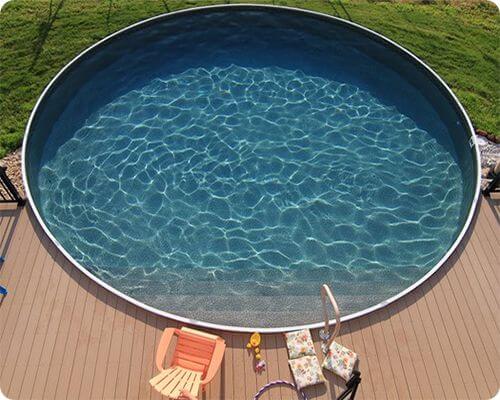
For an inground pool to work at this location, you would need 9 trucks of fill dirt to level the sloping backyard, an engineer’s study, and a grading plan. Unfortunately, all of these costs added up to nearly $10K before you really even get started. The homeowner decided to use a 21 ft. round above ground pool, and used some of the savings to install a beautiful composite wood deck around half of the pool.
One unique feature of this above ground pool is the walk-in steps, which add elegance and a real inground pool feel. Another bonus of installing an above ground pool on this job site? The homeowner was able to save substantially on pool fencing and landscaping costs.
2. Pool Wrapped in Wood and Stone
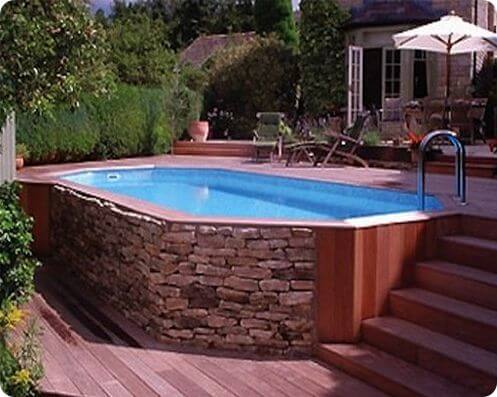
This pool is a great example of how you can wrap an above ground pool with stone and wood to create a pool that blends into the surroundings. Something like this setup can also add value to the property with an aesthetically pleasing pool. Here’s another great example of how to fit above ground pool into a sloping backyard. These homeowners used the 4 ft. height of the pool wall to their advantage, and this 15×30 ft. Grecian pool has a look of an inground pool. Also, the raised wall on one side adds an element of safety by providing an effective barrier to half of the pool perimeter.
3. Above Ground Pool with Terraced Deck
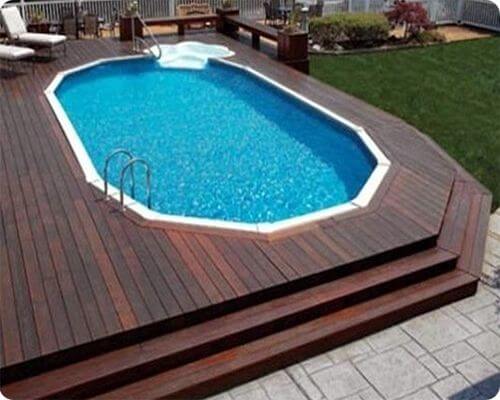
Are you beginning to see a pattern here? Sinking an above ground pool into a wooden deck or partially submerging it in the ground changes the entire look and feel of an above ground pool. Adding contrasting stampcrete and grass around the perimeter adds other visual elements and really makes this pool pop.
This location had a septic field running across the backyard, making an inground pool installation impossible. This 15×30 pool used the “lagoon” step as the pool entry, which also functions as a seating area. And with the installed jets, this setup provides spa-like hydrotherapy for sore DIY pool builders.
4. Corner Pool with Terraced Steps
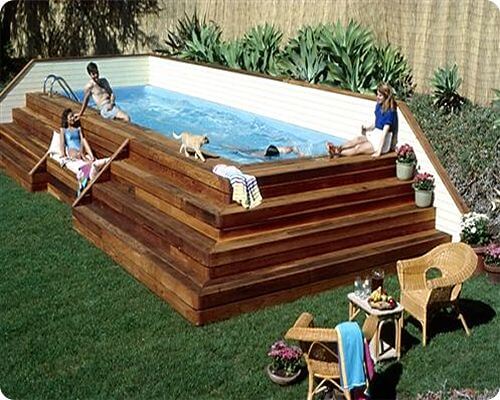
This is one of my favorite above ground pool designs. The wood deck functions as both stairs and seating. Really, it’s a very clever and attractive way to wrap the pool. Siding wraps the retaining wall around two sides of the pool, but it could also have stone, brick or nearly any other decorative treatment.
At only 8×18 ft. in size, this pool is also a great space saver, and could be tucked most anywhere. Something like this is especially useful for narrow urban backyards, or for when you want to preserve space in the backyard for other activities.
5. Above Ground Pool with Platform
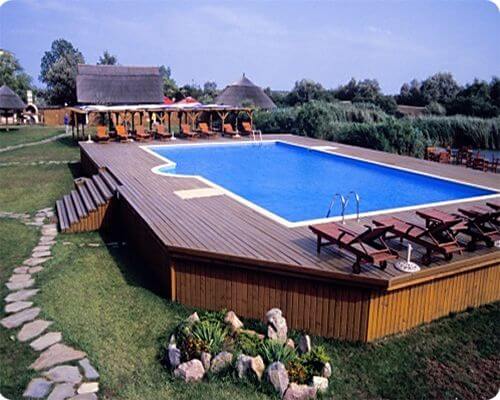
For those without space concerns, this above ground pool and deck has a lot of benefits. The raised pool deck, complete with paneled walls, acts as a barrier for young children and animals. Moreover, as an added bonus, the filtration equipment fits neatly underneath! This pool had no installation issues for an inground pool. The owners just wanted a more affordable option.
A pergola on the opposite end of this 20×40 ft. pool gives shade during the afternoon. As I understand, this pool was built in only a week! Nicely done!
6. Half Submerged Pool with Composite Deck
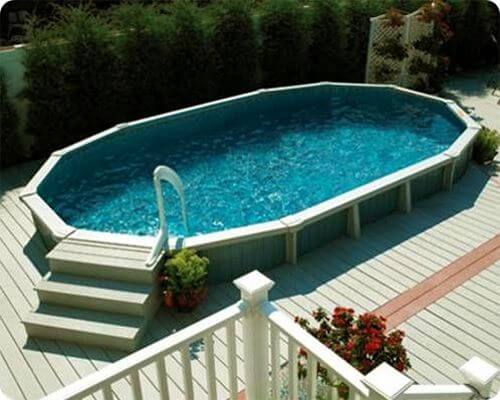
Here we have another 15×30 ft. oval above ground pool with a composite wood deck. This one is built on-ground, with the pool deck covering about half of the pool wall. This type of pool deck gives this above ground pool a unique, integrated look. And again, the elevation provides a marginal element of safety for small children and pets. It also helps to keep the pool clean by blocking autumn leaves that blow around the pool.
Evergreen cypress trees block the perimeter fence and also add some privacy to the pool. You could add extra potted plants in rectangle planter boxes if you wanted to hide the raised pool wall. But I think it looks kind of nice, don’t you?
7. Above Ground Pool with Safety Cover
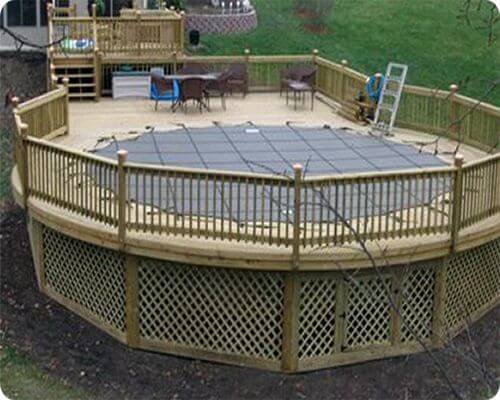
Another advantage of an above ground pool with a surround deck is that you can use a safety pool cover during winter, vacations, or anytime that you want to secure the pool. This type of wooden pool deck has built-in safety year-round. This design also features a self-latching gate on the upper deck, which is attached to the house.
The lattice on the underside is an economical way to hide the pool structure. You can see the small door used to access the pump and filter equipment, plus plenty of room for storing your pool stuff.
8. Above Ground Pool with Automatic Cover
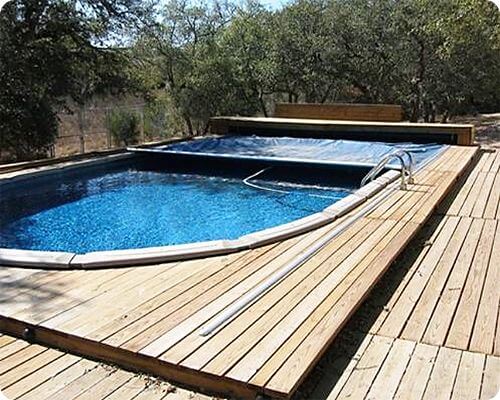
An above ground pool with an automatic cover? Yes! It can be done with a wooden deck built around the pool. A cover reel sits in the box at the end of the pool, and pull ropes run through the aluminum tracks that run down the side of the pool. Automatic covers offer unparalleled safety for any pool type, keep the pool clean, and save big bucks on pool heating costs.
The raised pool deck surrounding the pool keeps excessive leaves from blowing into the pool. Recessed lights illuminate the raised transition during evening hours. This 18×36 ft. above ground pool is built fully above ground, but the pool deck gives the illusion of an inground pool.
9. Semi Buried Pool with Composite Wrap and Walkway
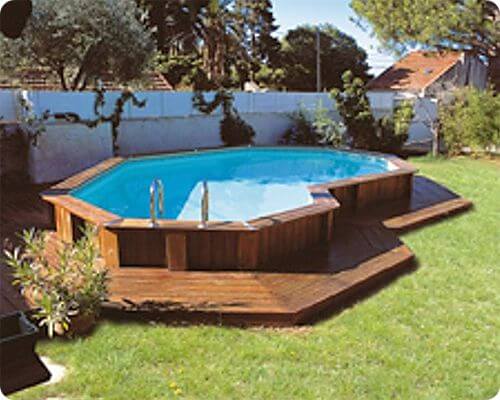
Now here’s a unique above ground pool design. The pool deck is at ground level, and the pool walls and top rails are wrapped in wood with extra wide planks. This pool sits on the ground, which is one of the great advantages of above ground pools – no excavation.
Not having to dig into the ground not only saves money, but can save nearby trees, and avoids the problem of what to do with all the excess fill dirt.
10. Above Ground Pool with Ipa Wood Deck

When you have a view like this, the pool has to be special. Hunter Pools of Australia perched this pool just perfectly, and then wrapped it with fine hardwoods like Ipa wood, which has outstanding resistance to rot and weather.
Another safety feature is the railing. This is required for suspended decks to keep your guests and pets safe. A complete deck like this also allows pool owners to install a safety pool cover for off-season use.
11. Above Ground Pool with Partial Platform
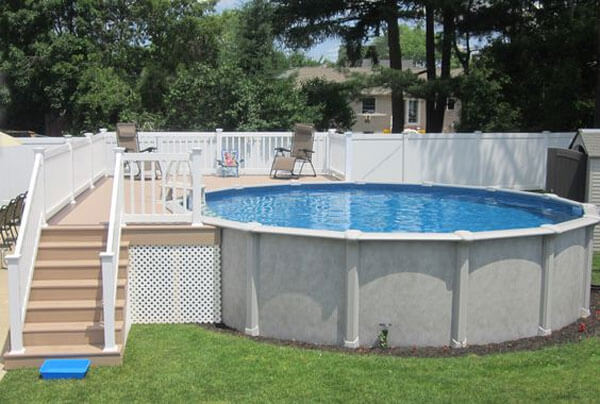
From Brothers 3 Pools, this custom pool deck looks safe and sturdy. It’s built to meet codes while providing space for relaxing and entertaining. Pool Decks like this also hide the pool equipment underneath.
Contrasting colors and neutral tones blend with other outdoor elements and push a pleasing palette. Composite materials used here will last longer and reduce demand for natural products. Called a “Quarter-Deck,” this style is popular for its cost to benefit ratio.
12. Above Ground Pool with Multi-Level Deck

Another Brothers 3 Pools deck, this two-level deck has style aplenty and looks super sturdy. In some cases, a pool deck can cover up rough terrain or areas adjacent to the pool that are difficult to maintain.
For these last few examples, the above ground pool deck is installed flush under the pool’s top rail. In other instances, the pool deck can overhang the top rail. Remember, however, to leave room for the future removal of the top rail, and also consider winter cover installation when choosing which style of deck you want.
13. Above Ground Pool with Wooden Deck and Safety Fence

Although this pattern makes me a wee bit dizzy, this above ground pool deck design is quite nicely done. Pre-assembled wall panels go up quickly and provide some pool privacy and safety.
This design allows the pool to be built on-grade, while having a walk-out or walk-up pool. Be sure to design safety into the pool deck and install a sturdy fence gates with self-closing hinges and self-locking latches.
14. Oversized Step Section and Walkway

Here’s a pool that was dug out halfway, or about 24″ deep. It was then likely backfilled with drain pipe and gravel. Next, they framed a composite deck for a path around the pool and an entrance platform.
On top of the half-height pool deck is an oversized step entrance system that I just love! Even though it’s not large enough for 4-Piece Wicker Seating Set, it does give a nice spot to sit and dangle feet in the pool.
15. Above Ground Pool with Resin Pool Deck

I’ve saved the best for last, because it’s the one type of pool deck that we can provide for you! This one is a pre-fabricated DIY pool deck package that comes complete and ready to assemble.
Vinyl Works 5’x13.5′ Pool Deck Kit adjusts for above ground pools with 48″-56″ walls, and adapts to any ladder or step system. It’s the perfect pool deck – one that will never warp, rot, or rust. Most importantly, and did we mention that it’s easy to keep clean? Above all, the lockable entry gate is a handy safety feature that will keep unattended kids and pets out of the pool.
How Much Pool Deck Do You Want?
A common size for a pool deck is a three-section fan deck that covers enough room for several people to use. On a round pool, it would follow the contour of your pool’s top rails for as many rails as you want to cover.
Another question to ask yourself is: how will you use a pool deck around your pool? Plan out what you want to do on the deck. Will you be using it just to get in and out of the pool? Or will you want to add lounges or a table and chair set? What about large planters, speakers, or maybe an outdoor fire pit?
Our above ground pool deck kits are prefab resin kits with everything you need to add steps to walk up to the deck and into the pool. We have deck kits in 5 ft x 5 ft square and a 5 ft x 13.5 ft two-section pool deck kit.
When Installing Your Pool Deck, Be Careful…
- DON’T install the deck in frequently wet areas. Use terra firma – dry land.
- DON’T build the deck right on top of your top rail if you use a winter cover.
- DO take your time with the instructions, and you will build it to last.
- DON’T rest any part of the deck against the pool, as it will weaken the pool’s integrity.
- DON’T make the deck much taller than the pool. It’s hard to find very tall ladders.
- DO install the deck area on the side closest to the house.
- DON’T block the full view of the pool.
If you get a wooden pool deck, you have different options of entering the pool. Deck to pool ladders use deck flanges to secure the ladder to the deck. A much better option are resin walk-in steps. These offer a gentler way to enter into the pool, especially for children and the elderly. Our resin pool deck kits include steps on both sides of the water, for easy, safe access. A ladder is a must for pool safety.
Whichever type of pool deck you choose, check with your local building department to see if there are code requirements involved where you live. Building a wooden deck usually needs a permit and inspection. You can usually find the information by searching your county’s or city’s .gov website for terms like “above ground swimming pool decks”.
There’s one more thing to talk about, and that’s safety. Many folks would like to build a full surround pool deck and connect it to the back of the house porch. This can be dangerous if there’s only 1 door between the house and the pool. To fix this issue, install an inside perimeter fence at the smallest point, with a self-closing and self-latching pool gate.
So What’s Next?
If you’ve thought about building your own inground pool, we’d love to talk to you about it. Or, if you have pool construction challenges or want to cut the price of a new swimming pool in half, we hope these above ground pool decks and design ideas gives you something to think about.
Above ground pools are available in all shapes and sizes. They’re also available for above ground, below ground, or even partially above ground installation. Anyone can sell you a package pool kit, but when you work with In The Swim, you get total support on your specific pool project. All of our Pool Experts are at your disposal to help you design your dream pool, whether inground or above ground!


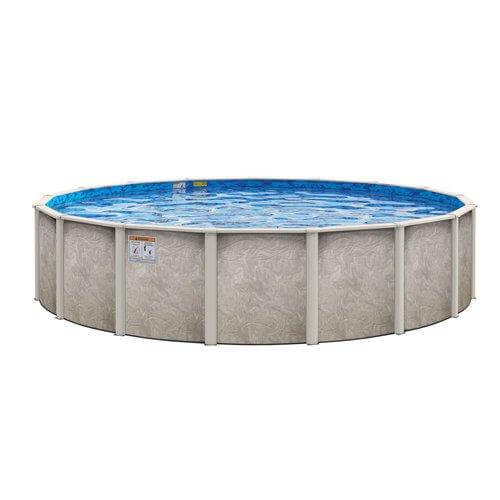
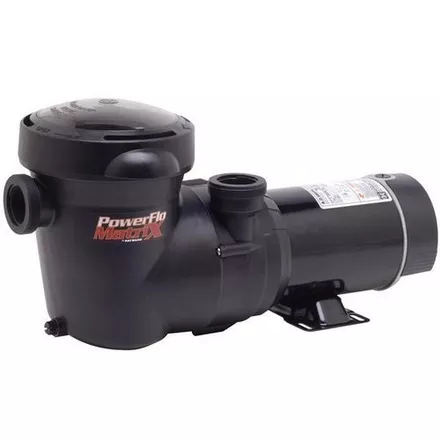
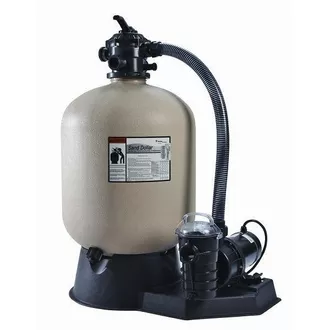
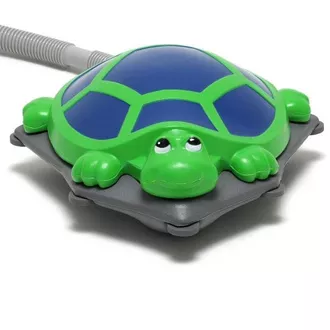
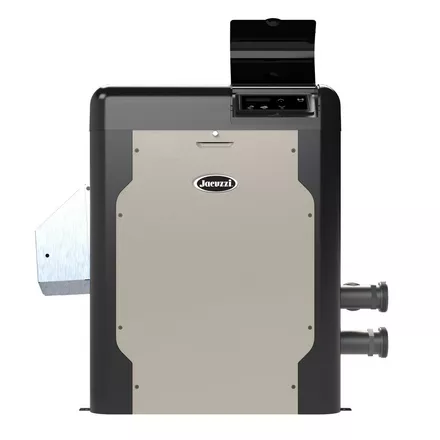
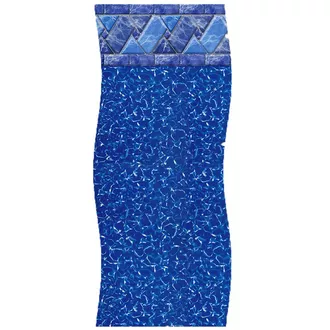
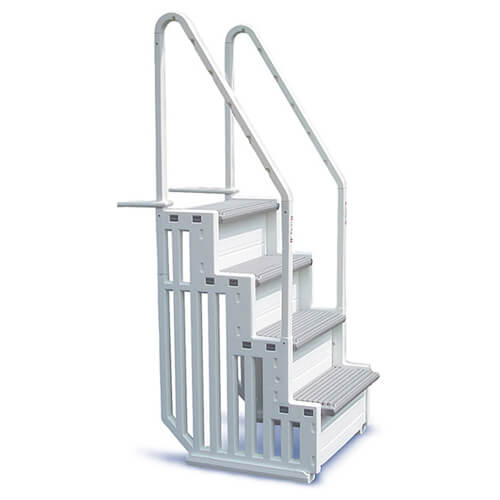
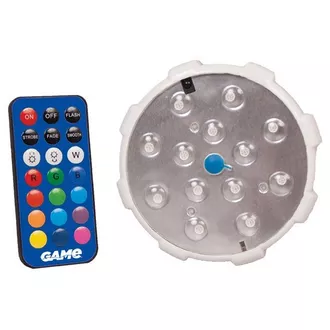
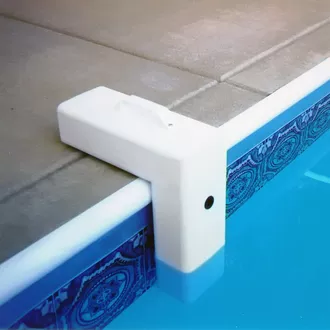
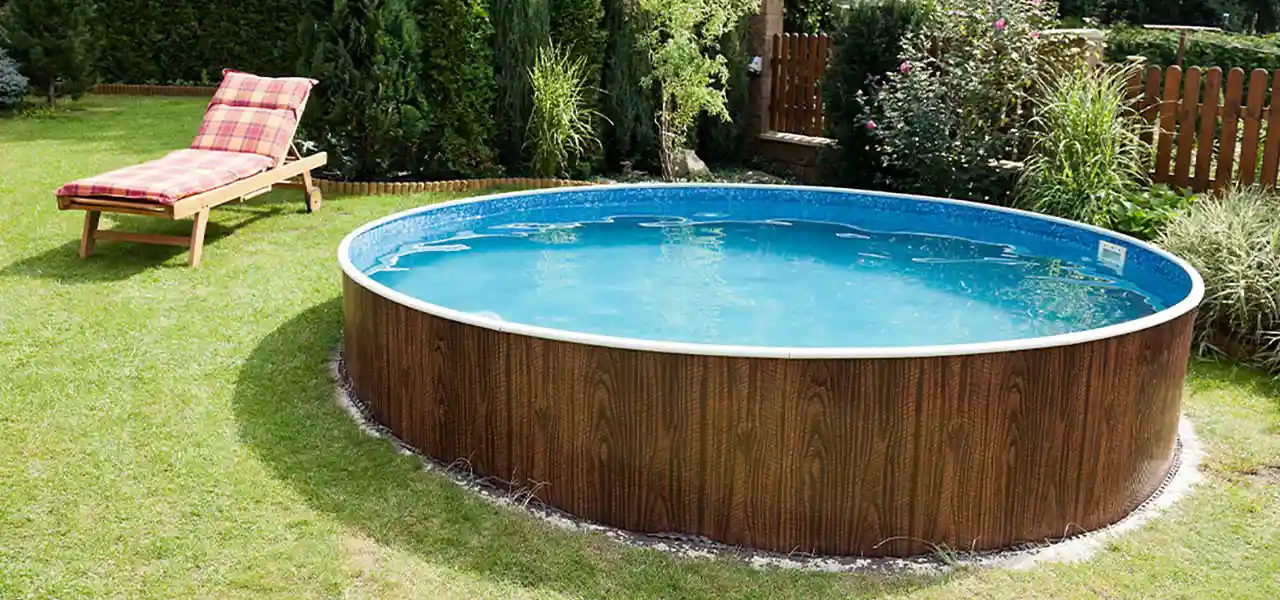

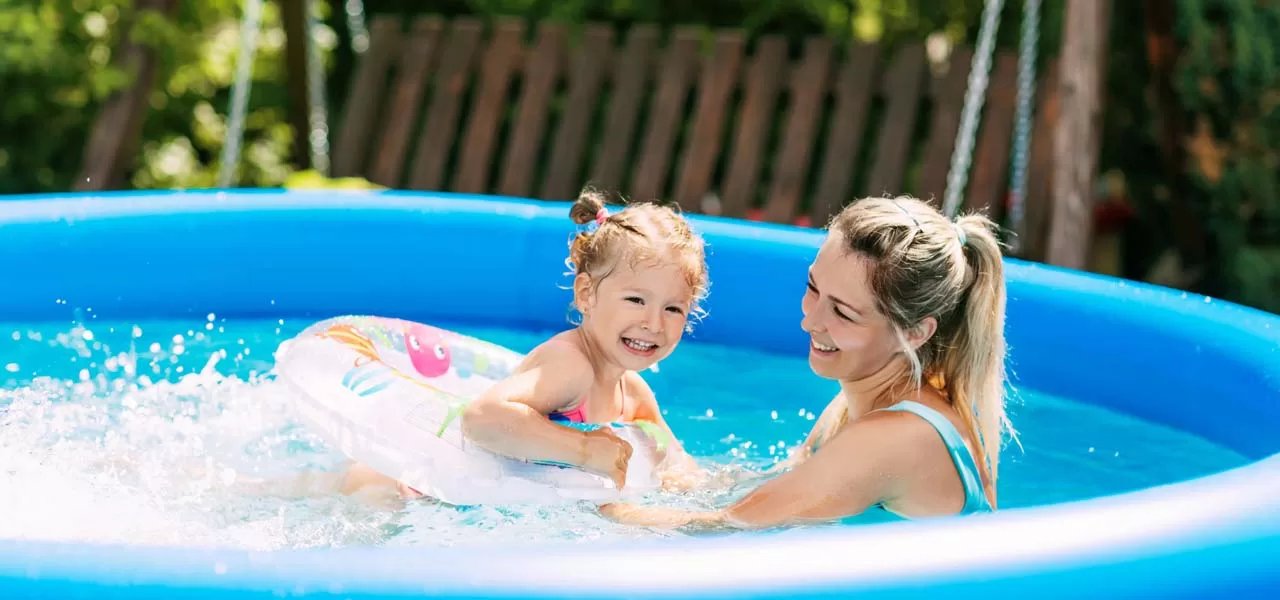
What is the average cost for a quarter deck?
Wanting to put in a pool, want and need recommendations and educated on the project.
I would like info and estimate on above ground pool similar to design #3. I am in Missouri do you service this area, do full installation, building deck, etc. thanks
Hi Susan, we are not pool or deck builders, but we do sell aboveground pools, online. https://www.intheswim.com/c/pools
I would like info on a pool and deck installation like number seven.
Hi Pierre, we don’t install or sell pool decks, these are just ideas to go along with the above-ground pools that we have available.
Above the ground pool that will be buried to the slop of my back yard. Need estimate to level,pumping and electric with a very nice design on decking made of cedar.